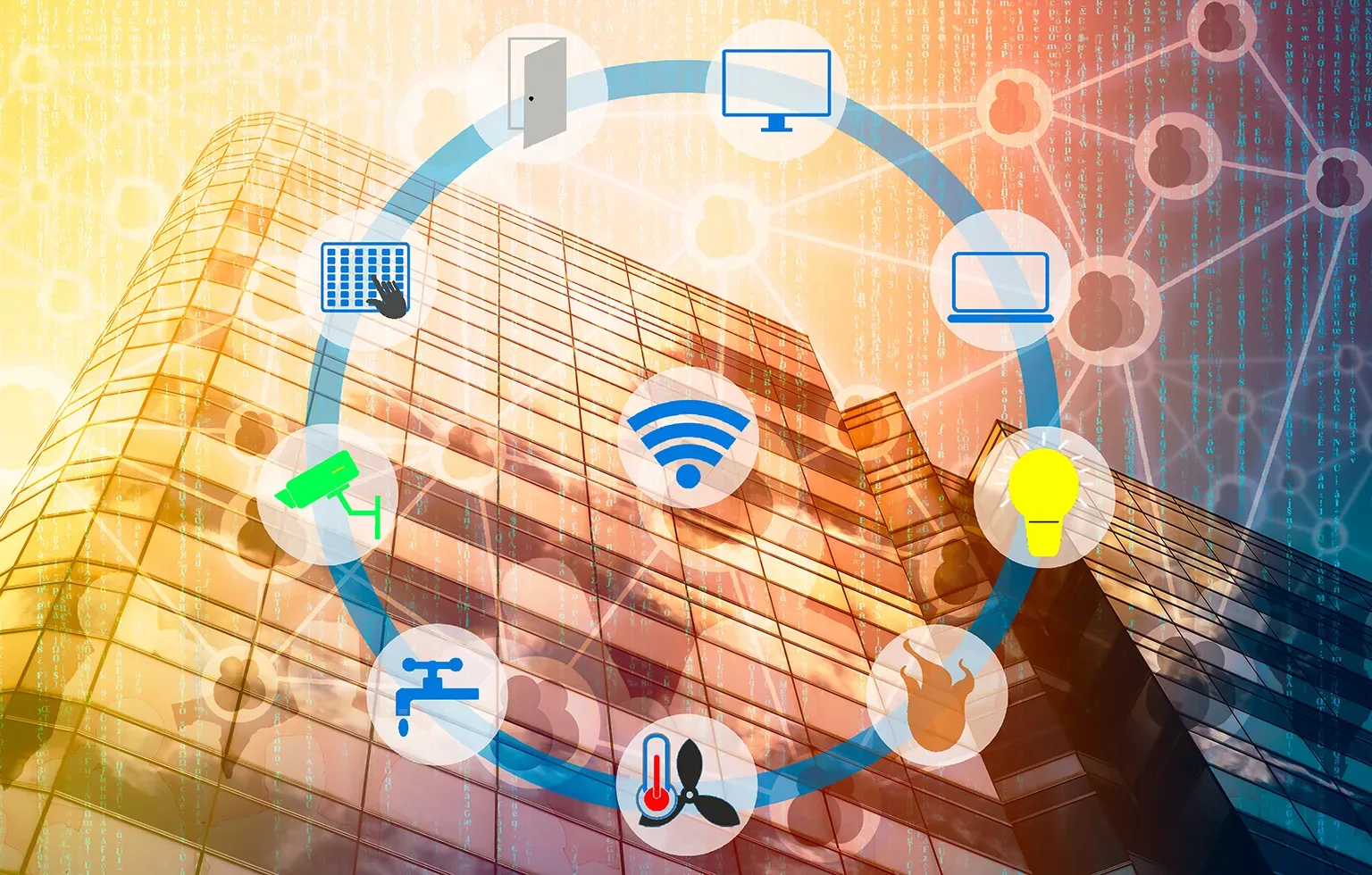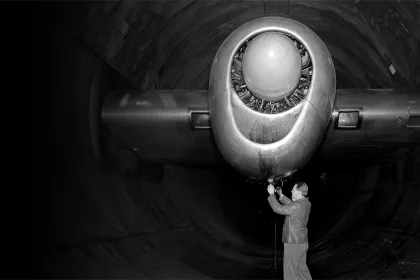Billy Marigold, Director of HDR, highlights the benefits of smart buildings and the integration of specialist technology, which enables the control of business’ data, analytics, and operational efficiency to forever alter workplace environment.
DESIGNING BUILDINGS FOR THE FUTURE
Integrating smart systems within a building allows engineers to create spaces that are not only efficient but also intelligent, flexible, and agile.
Imagine a workplace where smart controls seamlessly enhance your daily experience. You can reserve a desk, meeting room, or an informal breakout area from your home using an office app that is integrated with Microsoft Office 365 or Google Suite.
Alternatively, if you choose to cycle to work, the app provides route planning, bike rental information, and registration services. When you arrive, you can access stacked pods for parking, door control, electric charging points, and smart shower lockers.
Upon entering the lobby, you pass through security using a facial recognition system or Bluetooth. If you have visitors, you can share a QR code for hassle-free access. The meeting room’s power turns on as you enter, and you have control over setting the blinds, climate, and mood lighting to reduce energy consumption and enhance sustainability.
Smart buildings are revolutionising the 21st century workplace. They not only increase efficiency but also prioritise your comfort, wellness, health, and productivity.

21st CENTURY BUILDINGS
When exploring the building of the future, facility management teams can monitor and control mechanical, electrical, and plumbing (MEP) systems through a transparent, single-pane dashboard. This approach reduces installation costs and aligns with environmental initiatives aimed at achieving net zero carbon emissions and lowered energy consumption.
Additionally, integrated systems that can speak to each other enhance safety and security by using data from sensors and controls to coordinate access and improve fire safety.
Building operators can track efficiencies across all real estate assets worldwide, including real-time carbon monitoring. Furthermore, artificial intelligence (AI) analytics tools offer predictive maintenance for reducing operational costs and identifying potential improvements.
By establishing standard infrastructure across all buildings, including software and network selection, it can adapt to evolving client needs over time.
Picture a world where we advance from single smart buildings to nationwide sites and eventually global portfolios with specialised controls. Therefore, smart technology is transforming our social, communication, travel, and work experiences.
DEFINING A SMART BUILDING
It is not enough for a facility to just have a building management system (BMS), which has been around since the 1970s. The true distinction between this and a smart building system lies in the level of integration and interoperability of the building network, enabling efficiency and real-time decision-making for building owners.
Smart buildings can be categorised into three stages, based on the technology features implemented. Firstly, the basic non-integrated building has standalone, disjointed systems with independent reporting and multi-vendor support contracts.
Secondly, the digitally enabled building comprises ICT, audiovisual (AV), security, heating, ventilation, and air conditioning (HVAC), andintegrated BMS networks. Benefits include reduced vendor support contracts, Internet of Things (IoT) cloud connectivity, and app-ready properties.
Finally, the smart building includes MEP and ICT systems which exhibit interoperability with real-time data processing and interpretation tools. This enables substantial data collection and analytics, proactive reporting, and self-learning maintenance, leading to operational efficiencies, reduced costs, and healthier environments.
Early adoption and single engineering design solutions are two essential factors that building engineering professionals must focus on to deliver truly intelligent buildings. Early engagement and clear communication with clients from the project’s conception is critical, leading to cost-effective, integrated solutions that align with client objectives.
Meanwhile, embracing open protocols enables flexibility and avoids long-term contracts, empowering clients to easily tailor software to meet their evolving needs.
THE ROLE OF DIGITAL TWIN TECHNOLOGY
Digital twin technology is a valuable analytics tool that sets the parameters for data analysis, aiding asset management and decision-making. The cooperation between building engineers and smart teams is crucial for the effective use of digital twins, whilst uniformity in data articulation is vital for user-friendly analytics.
Intelligent technologies may not be immediately required in some cases, yet buildings should evolve to be ‘smart-ready’. The goal is to deliver workspaces that can adapt and support future technologies seamlessly.
Dynamic simulation, sustainable information charts, and historical energy efficiency data all help to predict a building’s energy consumption. The data informs design choices, aligning compliance predictions with operational energy efficiency. There are two primary applications: developer shell and core with public spaces, and tenant space fit-out. However, smart design approaches may vary based on the project type.
Smart buildings reduce carbon footprints, achieve sustainability targets, and enhance well-being and community. Moreover, intelligent buildings help improve the user experience and align with structural and cultural shifts in how people work and live.
NOT A ONE-SIZE-FITS-ALL SOLUTION
We cannot take a cookie cutter approach to smart buildings, as each project requires a tailored strategy to meet specific costs, programme parameters, client briefs, and intended uses.
To deliver high-quality, competitive smart buildings, early strategic planning is essential. User experience, data dashboards, smartphone apps, cybersecurity, open standards, sensors, and communication networks are key factors in technology design.
The future of smart and intelligent buildings lies in understanding scalability, flexibility, and continuous adaptation to emerging technologies. Engineers and designers play a crucial role in the ongoing transformation of how buildings are designed, constructed, operated, and maintained, thus helping to shape an intelligent and integrated built environment.


































